Estate Jewelry: A Necklace That Wears Its Own Rings
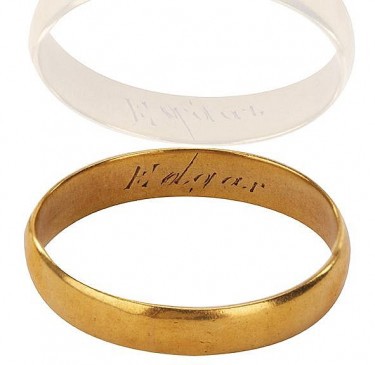
This gold ring belonged to Sarah Elmira Royster Sheldon, the childhood sweetheart of Edgar Allan Poe. Although they were secretly engaged as teenagers, Sarah’s father cut their relationship short, objecting to their youth and Poe’s hardscrabble background. Both Sarah and Edgar married others, but the two met again 23 years later. They soon rekindled their relationship (both of their spouses had passed away by that point), and the pair became engaged sometime around September 1849. Edgar gave Sarah this ring (inscribed “Edgar”), but a wedding never took place, as he died mysteriously on October 7, 1849.
After Poe’s death, Sarah gave the ring to Edgar’s sister Rosalie. It has passed down through the family until the present day, and it will be offered for sale in the Profiles in History “The Property of a Distinguished American Private Collector” auction on December 18. It’s part of a group lot that also contains a lock of Poe’s hair, family correspondence and photographs, and a silver spoon.
The Poe items are special, but they’re by no means the only reason to explore this auction. It is a treasure trove of incredible documents, with over 3,000 letters or manuscripts written by an incredibly varied group of historical and cultural icons. Monet, Horatio Nelson, Gandhi, George Washington, Catherine the Great, Darwin, Karl Marx, Marilyn Monroe, Einstein, Beethoven, Emily Dickinson, Lou Gehrig, the Marquis de Sade … this is just a fraction of the people involved. Set aside some time, click through, and wallow in some really fascinating documents (all of which have been transcribed for easy reading).
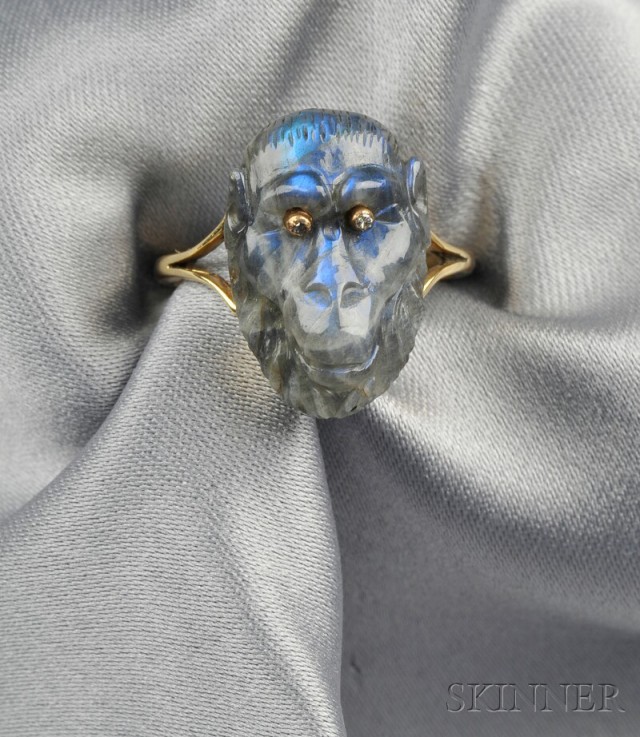
This is auction season, and there are tons of other great sales coming up in the next couple of weeks. There are too many to cover all of them — my eyes can’t take it — but I’ve cherry-picked some silly, beautiful, or otherwise noteworthy pieces from a few of the upcoming sales.
First up, the silly. This ring features the face of a monkey (gorilla?) carved from labradorite, with single-cut diamond eyes and an 18k gold band. The estimate is only $300–500, so he’s not totally inaccessible if you love him! He’s available at Skinner’s Fine Jewelry auction on December 4 in Boston.
Also in this auction are two pendants by the contemporary designer Coomi Bhasin (I love this one), and check out this pretty sapphire and diamond ring by Fred Leighton.
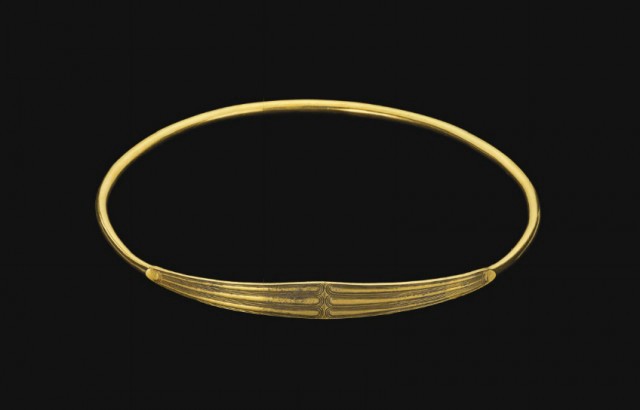
Christie’s New York is holding an Ancient Jewelry auction on December 5, and this Scythian gold torque from the 5th century B.C. is a standout piece. A torque (or torc) is basically a rigid ring for the neck, and it’s a form we see a lot in ancient jewelry. Worn by both women and men, torques usually signified nobility or possibly even the divine, as they’re often seen in depictions of ancient Celtic gods and goddesses. Soldiers of the Roman Republic also wore torques, and the warrior depicted in the famous (and, to me, heart-wrenching) sculpture Dying Gaul wears a torque with a twisted design.
This Christie’s torque is, to quote the catalog description, “of massive proportions,” and is made out of a solid rod (shush) of gold, with a central section that has been hammered flat and incised with a triple petal-like design. It’s listed as weighing 81.64 ounces, which works out to just over five pounds. Five pounds of gold on your neck. Can you imagine???
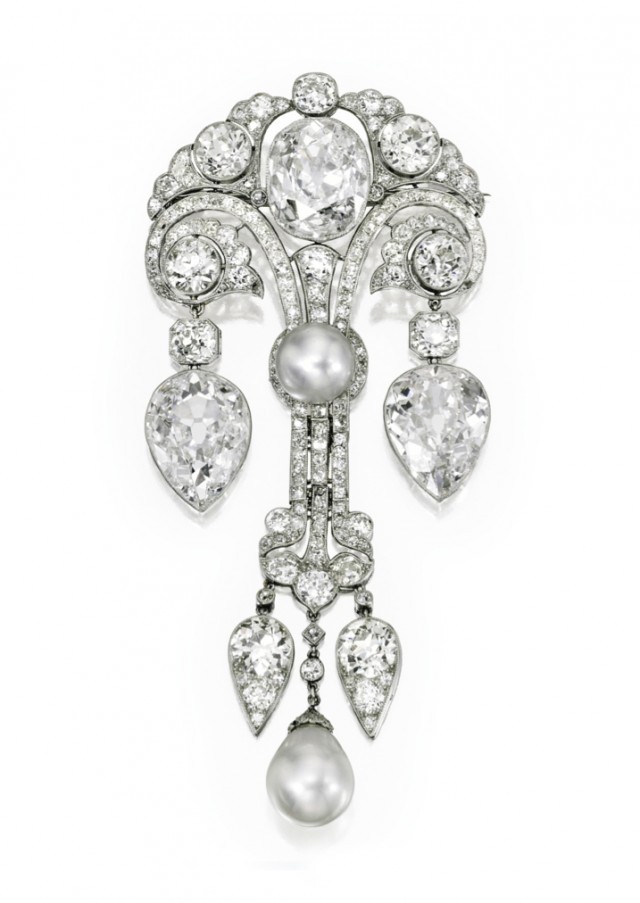
This platinum, natural pearl, and diamond corsage ornament dates to around 1910, and will be offered for sale in the Magnificent Jewels from the Collection of Mrs. Charles Wrightsman auction at Sotheby’s New York on December 5. Jayne Wrightsman (some great photos and background here) is a well-known philanthropist and collector, and the 63 jewels featured in this collection are a nice, eclectic mix, including contemporary rings by JAR and a 19th-century Imperial Russian bow brooch.
1910 saw fashion and jewelry design begin to embrace a smaller, more vertical silhouette, and this corsage ornament is a good example. Measuring around four inches in length, it features a large, button-shaped natural pearl, which is bookended by two pear-shaped diamond drops (weighing 9.59 carats and 8.78 carats). Another large cushion-cut diamond (8.67 carats) sits at the top of the piece, while two more diamonds and a large natural pearl drop extend below. Diamonds of various cuts — old European, rose and old mine — fill out the design. I’m not usually a big diamond person, but the design of this piece — which takes inspiration from the lotus flower — is unusual, and I think it’s very, very pretty.
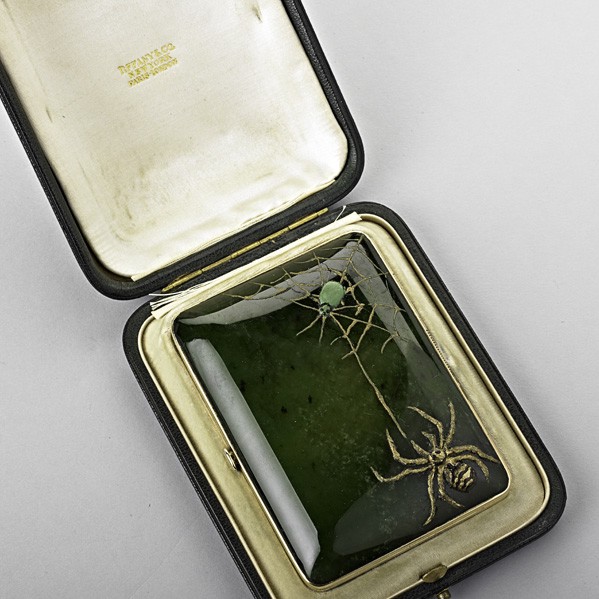
This fantastic spider-embellished 14k gold and nephrite (a form of jade) cigarette case is by Tiffany & Co., circa 1900. It will be offered for sale on December 9 in a jewelry auction at Lambertville, PA’s Rago Arts and Auction Center. Funny, I suddenly have an urge to take up smoking.
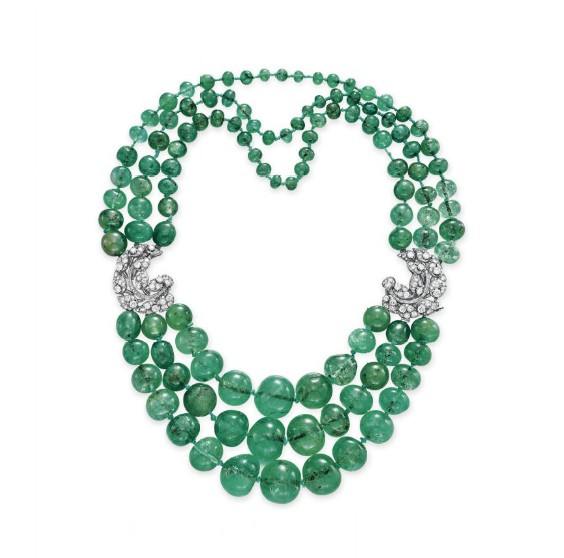
The Christie’s Magnificent Jewels auction scheduled for December 10 in New York has, as usual, a huge amount of big, bold gems — and this necklace is no slouch. Consisting of three strands of graduated emerald beads, it features two floral plaques of circular- and baguette-cut diamonds set in platinum.
(Also, look at this awesome little Cartier tiger!)
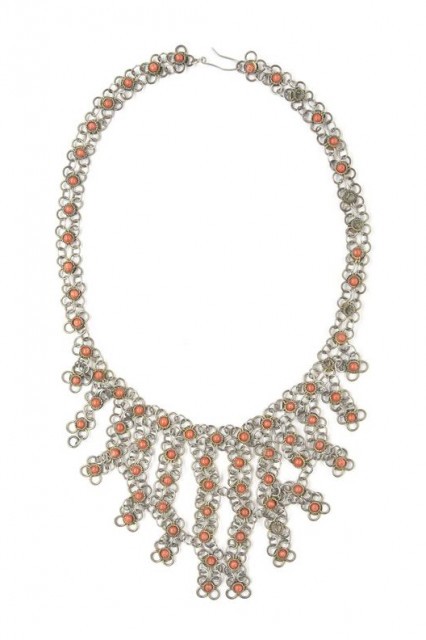
On December 12, Bonham’s in London will hold an Entertainment Memorabilia auction, and this particular lot jumped out at me. Being a “silvered metal necklace with coral colored inlay,” it’s not a particularly high-end piece of jewelry — but back in the 1960s, it belonged to Eric Clapton. Clapton was photographed wearing the necklace multiple times during his days with Cream, and he later gave it to the daughter of drummer Ginger Baker. The piece is estimated to sell for $1,600 — $2,400, and comes with a provenance letter signed by Clapton. Click through to view an, um, interesting photograph of the band.
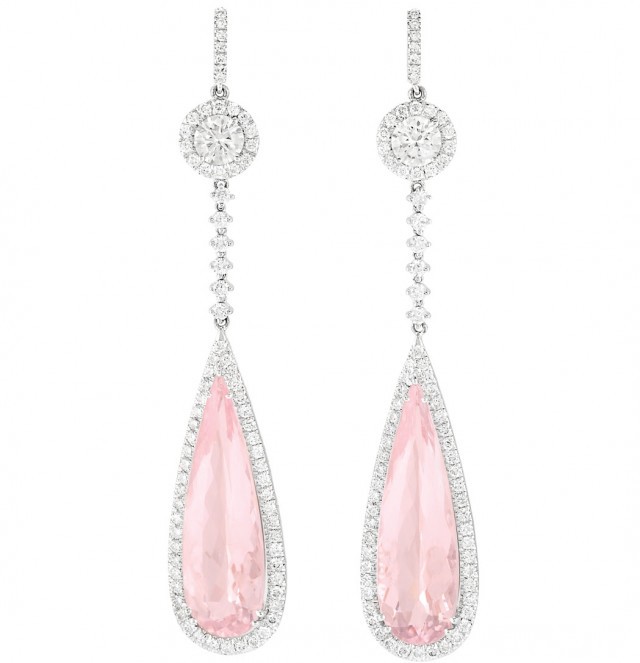
These beautiful 18k white gold, morganite and diamond earrings will be featured in Doyle New York’s Important Estate Jewelry auction, also on December 12.
The two drop-shaped morganites weigh around 16.60 carats, and are a lovely shade of pale pink. Morganite, a form of beryl, is named after J. P. Morgan, the famed banker, steel man, and philanthropist. Morgan was an avid gem collector, and he collaborated with Tiffany’s chief gemologist George Kunz (who I talked about last year!) to create two extraordinary collections of gemstones that now reside in the New York’s American Museum of Natural History.
I have a soft spot for Morgan, because his library (the Morgan Library & Museum) is probably my favorite museum in New York City, and I stop by every time I’m in town.
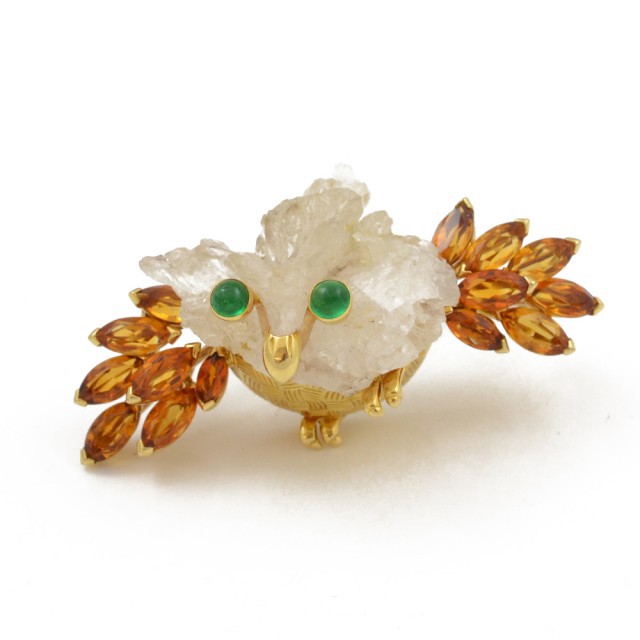
Okay, enough with the auctions, geez. Check out this great Cartier owl brooch! The designer has used rock crystal to represent the bird’s head, mounting it in 18k yellow gold and adding cabochon emerald eyes and citrine wings to create a successful abstract design. Circa 1960.
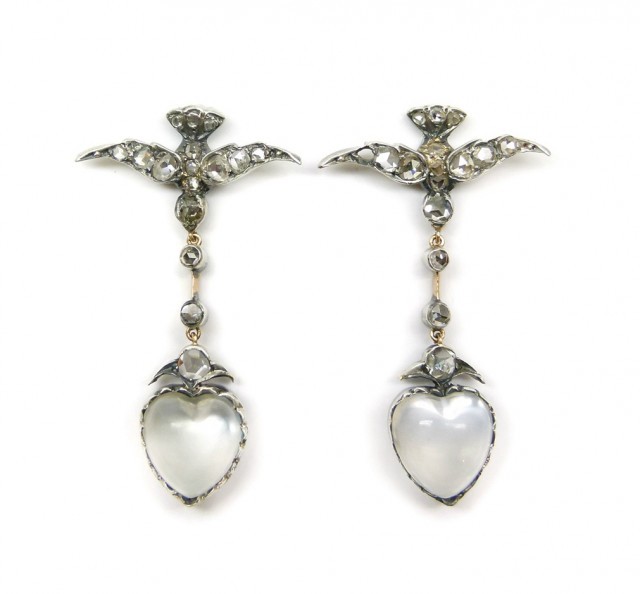
Circa 1890, these lovely earrings feature carved moonstone hearts suspended from diamond-set silver birds.
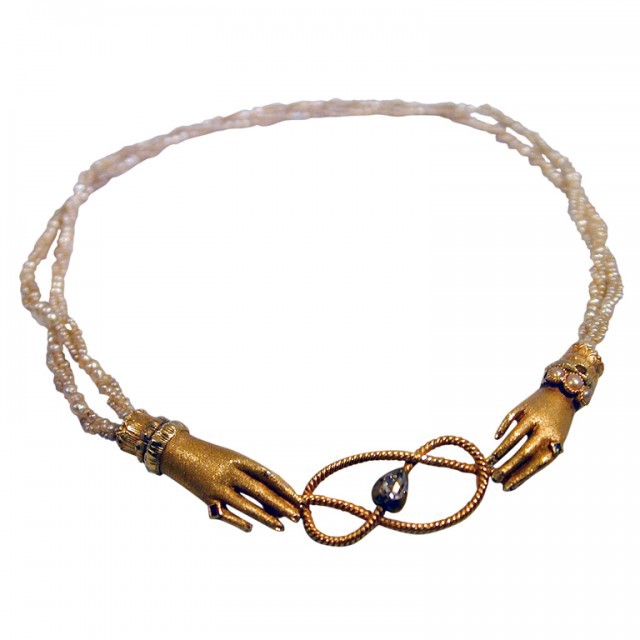
Wow, this necklace. Two 18k gold hands, linked by a 4-strand twisted rope of seed pearls, grasp either end of a diamond-embellished love knot. If you look more closely, you’ll see that the hands are different; one wears a pearl bracelet and an emerald ring, while the other has a ruby ring and gold cuffs. It’s English, circa 1826.
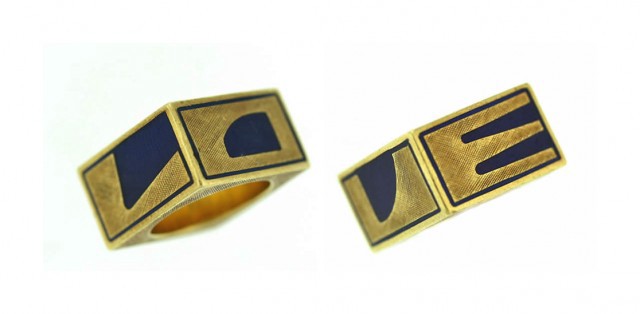
This four-sided ring spells out “LOVE” in 18k gold and blue enamel. Circa the 1970s (of course), it is totally not my taste, but I love it anyway because the letters remind me of Schoolhouse Rock. Yes, I know I just dated myself. (If you don’t know about Schoolhouse Rock, please go here for an example. An entire generation can sign the Preamble to the Constitution thanks to these cartoons.)
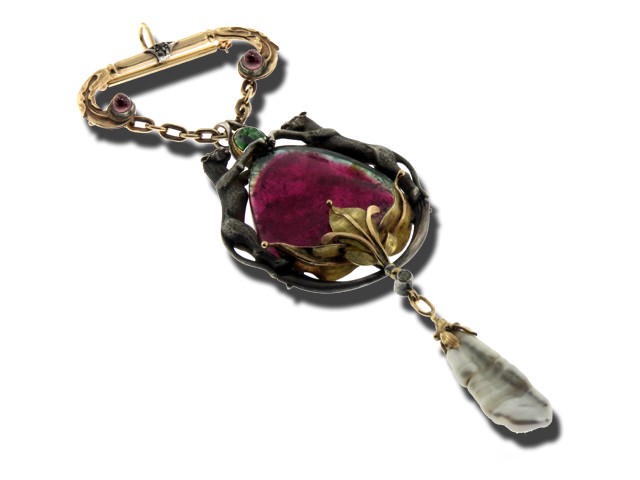
Boucheron is a venerable French jewelry house that dates back to 1858. They’re still in business today, so check out their website for a fantastic illustrated history that highlights some of their most outstanding jewels, milestones, and famous clients.
This combination pin/pendant is a particularly lovely Boucheron piece. In 18k yellow gold with an additional unidentified metal, it showcases a large watermelon tourmaline (a form of tourmaline that combines pink and green shades in one stone) that’s set into a stylized floral base and cradled by two outstretched panthers. Smaller green and pink tourmalines accent the design, which is finished with a natural pearl drop. The dealer description mentions that the piece comes in a fitted wooden box from the “Place Vendome Exhibition of 1925,” which may refer to the Boucheron store address on the Place Vendôme in Paris, and also to the 1925 Exposition International des Arts Décoratifs et Industriels Modernes at which they exhibited.
Previously: Horror Jewels.
Monica McLaughlin also recommends checking out the “Van Cleef & Arpels: Creativity and Innovation” exhibition now up at New York’s Macklowe Gallery until December 29. You can view the catalog here.